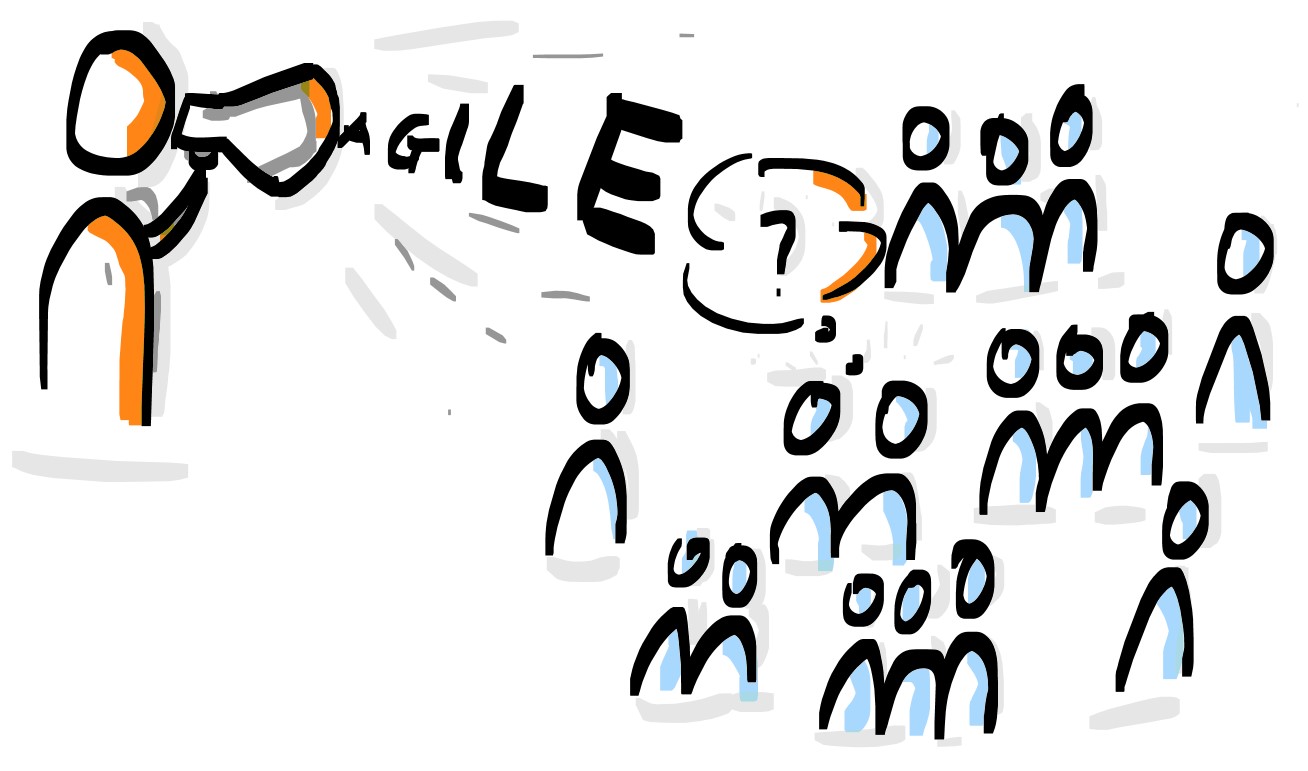Many managers and employees wonder what management means within an Agile working environment. What is the difference when it comes to Agile management? Do we explicitly need Agile management? And if so, what does it mean?
Wherever Agile is imposed these days
the very practical day-to-day question arises for many managers and employees: what on earth does this mean in concrete terms for me as a manager, project manager, or team member, and what for management or the organization as a whole?
Of course, management is and remains management. And yes, whether it is effective or ineffective still depends on the context and the individual actions of those involved.
As with a root canal, however, this is exactly where the great everyday pain is felt by all those who now work in an agile manner. All those people who are supposed to produce good, preferably excellent results with Agile. Unfortunately, however, they rarely find the conditions that are needed for Agility to have any positive effect at all.
Agile approaches have evolved
because they promised a more competitive response in certain areas compared to the organizational forms used to date. Changes of this kind always imply a change in priorities, perspectives, approaches, and also: world views.
And with it, a lot of friction.
This also applies to Agility. However, it offers a particularly large amount of material for conflicts. This is because its basic convictions are EXTREMELY contrary to previous management philosophies. And its structural design is also radically different from anything practiced to date.
This is why an Agile change is usually particularly prone to conflict for the individuals involved and the entire organization. It gets down to the nitty-gritty, about convictions and values, about the right path, the really big issues, in other words: leadership, motivation, trust, group performance rather than individual performance, status, etc.
.

The Agile idea
is based ultimately on a completely different understanding of people, organizations, their motivations, and modes of action, namely a constructivist-systems theory in the purest sense – which is precisely what makes the Agile advantage. In the words of my dear colleague and mentor, Jan Fischbach:
“People and human organizations are complex adaptive systems.”
And precisely not simple input-X-output-Y automatons. But on just this causality way of thinking still builds the structures in most companies today. This often against better knowledge. And also, although there may be Agile teams are in place, at least according to company propaganda.
Setting the framework for collaboration
is THE classic and top management and especially leadership task. In the Agile change, it is even particularly important, exactly because it concerns a nearly maximum (value) change, with which inevitably many powerful fears and resistances are attached.
Thus for me the answer to the initial question is clearly: Agile management is very different from existing management. For example, because
- it is convinced that there is only intrinsic motivation;
- because it radically trusts in mainly self-organized group processes and therefore and unrestrictedly is based on (structured) group decisions;
- because it thinks exclusively in terms of tasks and roles and therefore completely renounces hierarchy, status, and consequently coercion of any kind – not only in the general organizational structure but especially in individual communication and action!
 All this makes clear
All this makes clear
It is true that a manager remains a manager. But it needs specialized Agile managers! Because Agile has a specific focus with a specific mission, which results in different tasks for everyone than in a non-Agile environment.
Therefore, Agile managers need different skills and resources and also different structures than their colleagues in non-Agile organizations. Above all, Agile managers need a SYSTEMIC process mindset, Agile convictions, and a corresponding personal attitude.
And the will of top-level management to work in an AGILE way.

 All this makes clear
All this makes clear